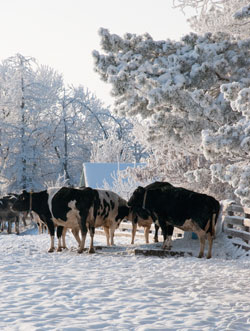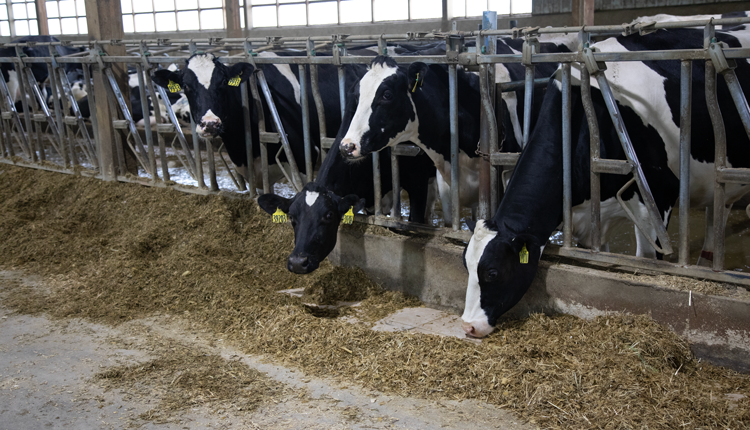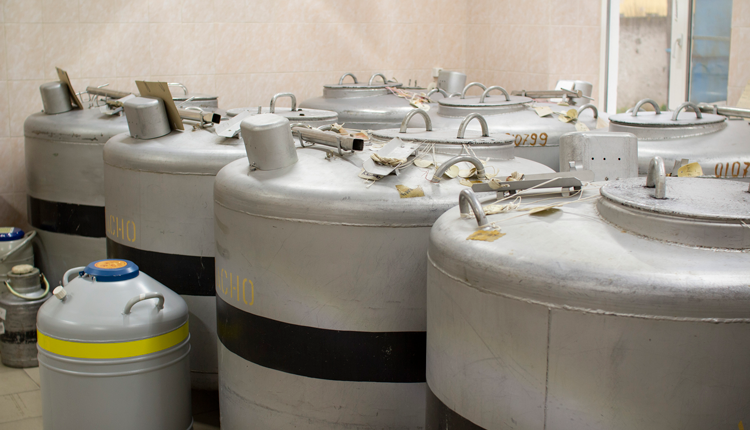by Amanda Smith, Associate Editor
 "We have a tendency to have a disastrous year in agriculture every 19 years, on average," noted Elwynn Taylor, an agricultural meteorologist with Iowa State University.
"We have a tendency to have a disastrous year in agriculture every 19 years, on average," noted Elwynn Taylor, an agricultural meteorologist with Iowa State University.
Weather can make or break in agriculture. A late spring, early winter or both, much like we saw this year, can put a significant damper on our best-laid cropping plans. And a winter akin to the one we had this past year takes a toll on all involved.
"November was a cold month, but December should be warmer," Taylor said. "December has only been warmer than November twice since weather stations were put in place; this December may be the third," he continued.
"Despite this slight warming trend, we can expect more harsh winters over the next 20 years," added Taylor. Harsher-than-normal winters aren't a new phenomenon, though, as they occur in 60-year cycles due to the impact of North Atlantic currents.
Harsh winters are classified those with six or more arctic air outbreaks. Arctic air outbreaks, better known as a "Polar Vortex," occur when the vortex surrounding the poles breaks down, allowing for the movement of cold air.
"Last year, we had nine arctic wind events throughout the winter. This year, we've already had two," added Taylor.
Not to be outdone by winter, El Niño and La Niña events have a big effect on Midwestern agriculture, too. "With an El Niño, there is a 70 percent chance that U.S. corn yield will be above trendlines; with a La Niña, the opposite is often true," he noted. In a drought year, yields can be expected to be 10 percent below trendlines.
Climate risk in agriculture will likely be greater during the next 20 years than it has been over the past 20 years. "Climate change is nothing new," said Taylor. "The climate has and always will change. The real questions are how much, how fast and how come it is changing."
To comment, email your remarks to intel@hoards.com.
 "We have a tendency to have a disastrous year in agriculture every 19 years, on average," noted Elwynn Taylor, an agricultural meteorologist with Iowa State University.
"We have a tendency to have a disastrous year in agriculture every 19 years, on average," noted Elwynn Taylor, an agricultural meteorologist with Iowa State University. Weather can make or break in agriculture. A late spring, early winter or both, much like we saw this year, can put a significant damper on our best-laid cropping plans. And a winter akin to the one we had this past year takes a toll on all involved.
"November was a cold month, but December should be warmer," Taylor said. "December has only been warmer than November twice since weather stations were put in place; this December may be the third," he continued.
"Despite this slight warming trend, we can expect more harsh winters over the next 20 years," added Taylor. Harsher-than-normal winters aren't a new phenomenon, though, as they occur in 60-year cycles due to the impact of North Atlantic currents.
Harsh winters are classified those with six or more arctic air outbreaks. Arctic air outbreaks, better known as a "Polar Vortex," occur when the vortex surrounding the poles breaks down, allowing for the movement of cold air.
"Last year, we had nine arctic wind events throughout the winter. This year, we've already had two," added Taylor.
Not to be outdone by winter, El Niño and La Niña events have a big effect on Midwestern agriculture, too. "With an El Niño, there is a 70 percent chance that U.S. corn yield will be above trendlines; with a La Niña, the opposite is often true," he noted. In a drought year, yields can be expected to be 10 percent below trendlines.
Climate risk in agriculture will likely be greater during the next 20 years than it has been over the past 20 years. "Climate change is nothing new," said Taylor. "The climate has and always will change. The real questions are how much, how fast and how come it is changing."








